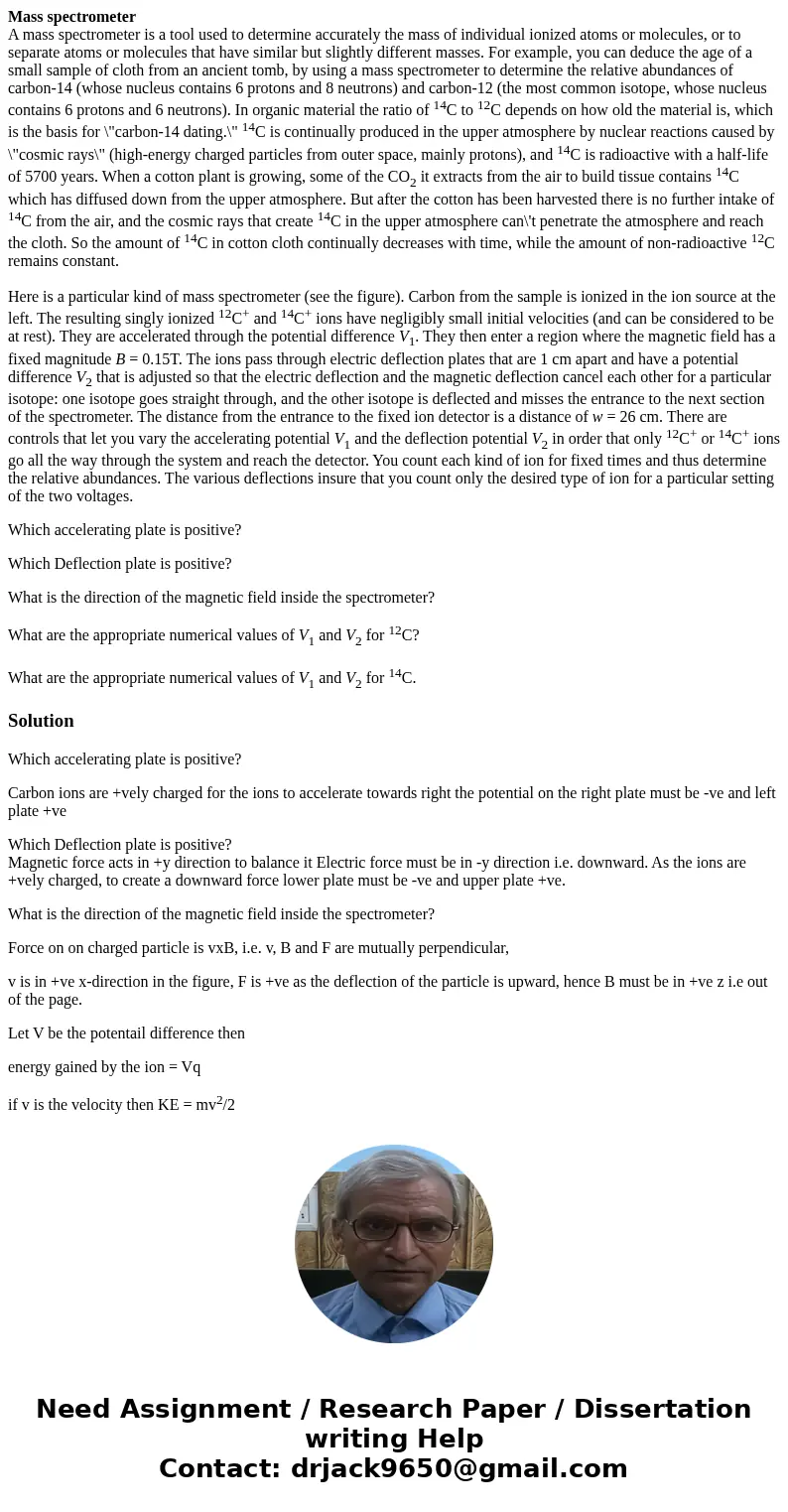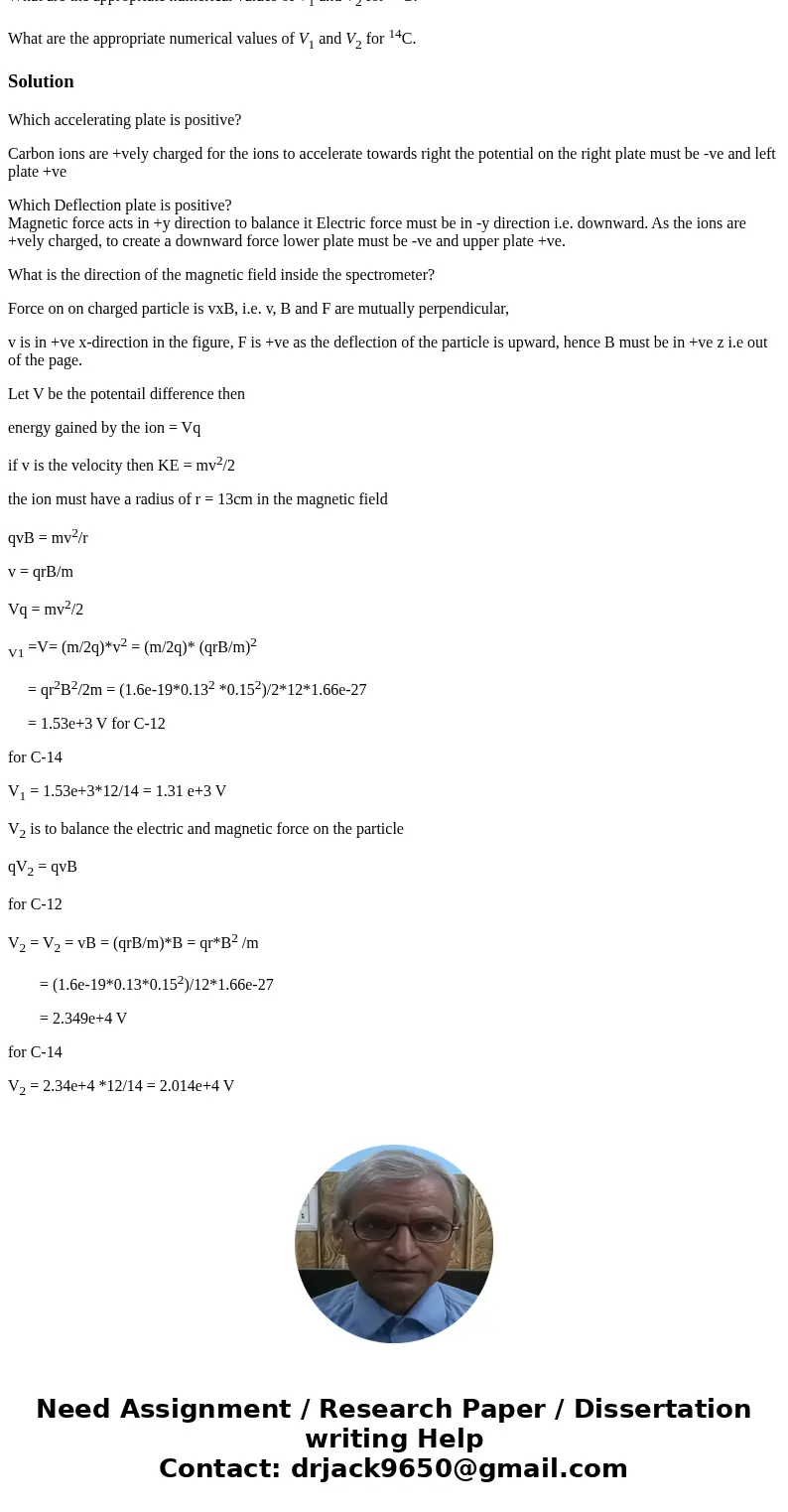Mass spectrometer A mass spectrometer is a tool used to dete
Mass spectrometer
A mass spectrometer is a tool used to determine accurately the mass of individual ionized atoms or molecules, or to separate atoms or molecules that have similar but slightly different masses. For example, you can deduce the age of a small sample of cloth from an ancient tomb, by using a mass spectrometer to determine the relative abundances of carbon-14 (whose nucleus contains 6 protons and 8 neutrons) and carbon-12 (the most common isotope, whose nucleus contains 6 protons and 6 neutrons). In organic material the ratio of 14C to 12C depends on how old the material is, which is the basis for \"carbon-14 dating.\" 14C is continually produced in the upper atmosphere by nuclear reactions caused by \"cosmic rays\" (high-energy charged particles from outer space, mainly protons), and 14C is radioactive with a half-life of 5700 years. When a cotton plant is growing, some of the CO2 it extracts from the air to build tissue contains 14C which has diffused down from the upper atmosphere. But after the cotton has been harvested there is no further intake of 14C from the air, and the cosmic rays that create 14C in the upper atmosphere can\'t penetrate the atmosphere and reach the cloth. So the amount of 14C in cotton cloth continually decreases with time, while the amount of non-radioactive 12C remains constant.
Here is a particular kind of mass spectrometer (see the figure). Carbon from the sample is ionized in the ion source at the left. The resulting singly ionized 12C+ and 14C+ ions have negligibly small initial velocities (and can be considered to be at rest). They are accelerated through the potential difference V1. They then enter a region where the magnetic field has a fixed magnitude B = 0.15T. The ions pass through electric deflection plates that are 1 cm apart and have a potential difference V2 that is adjusted so that the electric deflection and the magnetic deflection cancel each other for a particular isotope: one isotope goes straight through, and the other isotope is deflected and misses the entrance to the next section of the spectrometer. The distance from the entrance to the fixed ion detector is a distance of w = 26 cm. There are controls that let you vary the accelerating potential V1 and the deflection potential V2 in order that only 12C+ or 14C+ ions go all the way through the system and reach the detector. You count each kind of ion for fixed times and thus determine the relative abundances. The various deflections insure that you count only the desired type of ion for a particular setting of the two voltages.
Which accelerating plate is positive?
Which Deflection plate is positive?
What is the direction of the magnetic field inside the spectrometer?
What are the appropriate numerical values of V1 and V2 for 12C?
What are the appropriate numerical values of V1 and V2 for 14C.
Solution
Which accelerating plate is positive?
Carbon ions are +vely charged for the ions to accelerate towards right the potential on the right plate must be -ve and left plate +ve
Which Deflection plate is positive?
Magnetic force acts in +y direction to balance it Electric force must be in -y direction i.e. downward. As the ions are +vely charged, to create a downward force lower plate must be -ve and upper plate +ve.
What is the direction of the magnetic field inside the spectrometer?
Force on on charged particle is vxB, i.e. v, B and F are mutually perpendicular,
v is in +ve x-direction in the figure, F is +ve as the deflection of the particle is upward, hence B must be in +ve z i.e out of the page.
Let V be the potentail difference then
energy gained by the ion = Vq
if v is the velocity then KE = mv2/2
the ion must have a radius of r = 13cm in the magnetic field
qvB = mv2/r
v = qrB/m
Vq = mv2/2
V1 =V= (m/2q)*v2 = (m/2q)* (qrB/m)2
= qr2B2/2m = (1.6e-19*0.132 *0.152)/2*12*1.66e-27
= 1.53e+3 V for C-12
for C-14
V1 = 1.53e+3*12/14 = 1.31 e+3 V
V2 is to balance the electric and magnetic force on the particle
qV2 = qvB
for C-12
V2 = V2 = vB = (qrB/m)*B = qr*B2 /m
= (1.6e-19*0.13*0.152)/12*1.66e-27
= 2.349e+4 V
for C-14
V2 = 2.34e+4 *12/14 = 2.014e+4 V


 Homework Sourse
Homework Sourse